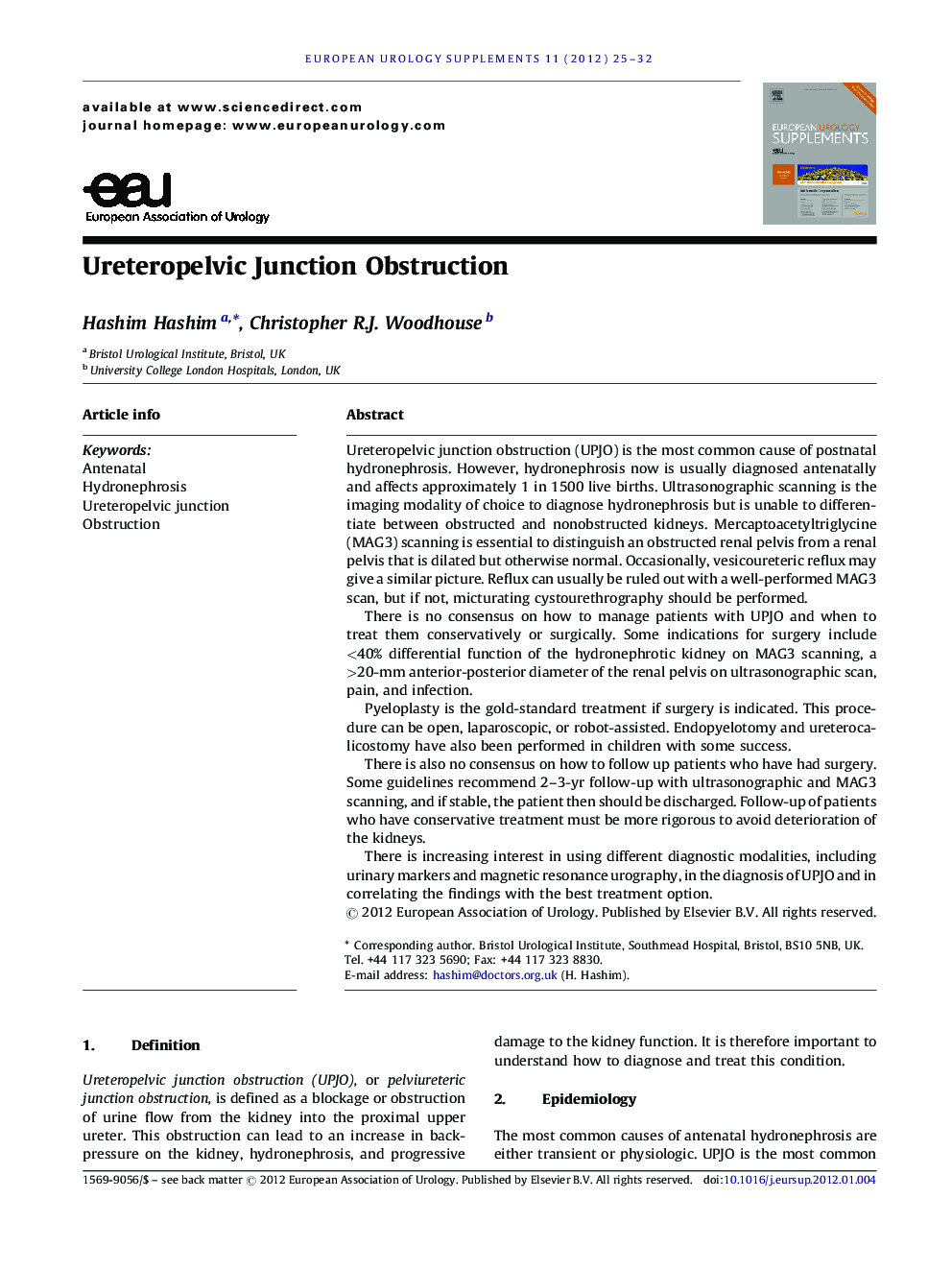| Article ID | Journal | Published Year | Pages | File Type |
|---|---|---|---|---|
| 3931979 | European Urology Supplements | 2012 | 8 Pages |
Ureteropelvic junction obstruction (UPJO) is the most common cause of postnatal hydronephrosis. However, hydronephrosis now is usually diagnosed antenatally and affects approximately 1 in 1500 live births. Ultrasonographic scanning is the imaging modality of choice to diagnose hydronephrosis but is unable to differentiate between obstructed and nonobstructed kidneys. Mercaptoacetyltriglycine (MAG3) scanning is essential to distinguish an obstructed renal pelvis from a renal pelvis that is dilated but otherwise normal. Occasionally, vesicoureteric reflux may give a similar picture. Reflux can usually be ruled out with a well-performed MAG3 scan, but if not, micturating cystourethrography should be performed.There is no consensus on how to manage patients with UPJO and when to treat them conservatively or surgically. Some indications for surgery include <40% differential function of the hydronephrotic kidney on MAG3 scanning, a >20-mm anterior-posterior diameter of the renal pelvis on ultrasonographic scan, pain, and infection.Pyeloplasty is the gold-standard treatment if surgery is indicated. This procedure can be open, laparoscopic, or robot-assisted. Endopyelotomy and ureterocalicostomy have also been performed in children with some success.There is also no consensus on how to follow up patients who have had surgery. Some guidelines recommend 2–3-yr follow-up with ultrasonographic and MAG3 scanning, and if stable, the patient then should be discharged. Follow-up of patients who have conservative treatment must be more rigorous to avoid deterioration of the kidneys.There is increasing interest in using different diagnostic modalities, including urinary markers and magnetic resonance urography, in the diagnosis of UPJO and in correlating the findings with the best treatment option.
